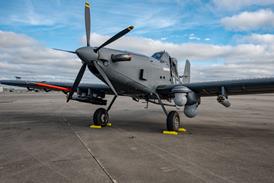The only surprise in the regional-airliner tie-up between Aerospatiale, Alenia and British Aerospace is that it is happening. The tie-up does not represent the end of the restructuring of the European regional-airliner industry, but the beginning of a new route for which there are, as yet, no maps. By including Avro's regional jets in the equation, the partners in the proposed alliance have gone much further already than most had expected. That indicates that reform in this sector is going to be far more sweeping, far sooner than most observers had foreseen.
The biggest step in this deal is the conceptual one of actually making a move. In practice, it will have little real effect in the next couple of years. Of the world's overpopulation of turboprop and small turbofan airliners, only one species is so far definitely earmarked for extinction - Jetstream's unloved J61 (although it is highly unlikely that any more Jetstream 31s will be built). The rest will live on, as will all the factories in which they are made.
Even the make-up of this new, so-far-nameless, grouping is far from being settled. There are still two other major European manufacturers - Saab and Daimler-Benz Aerospace (DASA) - with six major product lines (Saab's 340 and 2000, and DASA's Dornier 328, Fokker 50, 70 and 100) outside this grouping. Either or both could end up in the grouping before long - to everyone's mutual benefit.
The real test of the European regional alliance (and its first real opportunity) will come only when the current generation of small airliners is replaced. Each significant European player has at least one significant model with a significant order backlog. That buys a certain amount of time for the current alliance players and any potential extra partners. At today's rates of ordering and building, however, few of the existing turboprops have economic production lives stretching beyond the turn of the century, and even the question of a new regional jet needs to be tackled soon.
On that scale, some time in the next two years Europe's manufacturers are going to have to make the decisions on exactly, which markets they are going to serve, with what, in the future. Certainly, it seems that the 19-seat market has shrunk to the point where existing designs like the Fairchild Metro and Beech 1900 will be able to satisfy any foreseeable remaining demand. The 30-seat segment is well served with some of the newer aircraft and there may be some stability there for a few years. There is a much greater mix at 50 seats and above, even after the J61 is written out, and it is there that the greatest battle must lie.
There is little room for error. The sector has never been a large one and even the manufacturer's own predictions, hold out little hope for growth. The future of the sector is further confused by the continuing debate over the desirability of turboprop or turbofan power for these relatively few aircraft. It is also in that sector that the greatest threat to the Europeans (however they combine) comes - and that is from Boeing and its potential Asian partners, especially the Japanese.
Whatever the Europeans decide to make, they must also decide where to make it. The Aerospatiale/Alenia/British Aerospace alliance has three regional-airliner final-assembly sites already, which is probably two too many. DASA has another two, Saab another one. Logic dictates that Europe needs no more than two such assembly sites and far fewer sub-assembly sites than it now has. Inevitably, this means the end of the much, treasured ability, so far preserved in several European countries, of being able to design and manufacture complete aircraft. Indeed, it is likely that some of today's regional-aircraft makers, whether or not they become part of the grand alliance, will end up not being involved in the manufacture of the next generation.
Achieving such a rationalisation will not be easy, as the job losses announced by BAe in connection with the latest agreement demonstrate, but arguably the most difficult step of all has already been taken. Europe's aircraft industry must end up much stronger as a result.
Source: Flight International























